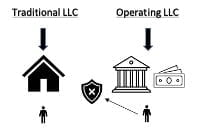By: Derek Toone
 The short answer, YES. If you hire employees, it is in your best interest to have Employment Practices Liability Insurance. Why? Because Employment Practices Liability Insurance (EPLI) protects employers by covering the cost of certain employment lawsuits. While it may be a part of your Business Owners Policy (BOP), General Liability Policy, or other policy, often it is not. Included in this post are a few suggestions to help further protect your business and employees from the financial burden of employment-related litigation and future claims.
The short answer, YES. If you hire employees, it is in your best interest to have Employment Practices Liability Insurance. Why? Because Employment Practices Liability Insurance (EPLI) protects employers by covering the cost of certain employment lawsuits. While it may be a part of your Business Owners Policy (BOP), General Liability Policy, or other policy, often it is not. Included in this post are a few suggestions to help further protect your business and employees from the financial burden of employment-related litigation and future claims.
First, Employment Practices Liability Insurance (EPLI) has existed for decades as a risk management tool.[1] Insurance companies began offering “stand-alone” EPLI policies that included both indemnity and defense costs in the early 1990s.[2] During that time, lawsuits and policies ranged from wrongful termination, discrimination, and sexual harassment.[3] Since then, employment-related lawsuits have been on the rise, and the coverage areas EPLI protects have been expanding. For example, in 1992, there were 72,302 charges filed with the U.S. Equal Employment Opportunity Commission (EEOC), but by 2011, that number swelled to 99,947.[4] Moreover, EPLI now protects employers by covering such things as breach of employment contract, wrongful discipline, mismanagement of employee benefit plans, workplace harassment, and wrongful infliction of emotional distress.
Next, while it may seem like large corporations, with scores of employees, are more likely to need EPLI, employers of all sizes can benefit by having EPLI coverage. That is because most EPLI policies protect the employer from more than just claims by full and part-time salaried employees. Some policies go as far as protecting against claims from hourly, seasonal, and temporary employees. This is important because if you hire a third-party “temp help,” you may incur the type of liability EPLI is meant to protect. For example, a temp help agency usually handles hiring, firing, performance, and salary of the temp employee. Yet, if a claim for sexual harassment or discrimination arises between your business and the employee, though the employee works through the temp agency, your business can still be held liable for the cost of litigation. Or, if an employee’s actions negatively impact a customer, in such cases as sexual conduct or discrimination, your business may also be held liable and incur litigation costs. These examples are a few among many that demonstrate when others work for you, EPLI may be needed. So, if you think you are already covered under an existing policy, consider checking again to confirm EPLI coverage.
Finally, there is a bigger problem that lies outside the question of EPLI. An independent study by the EEOC found that “only 30% of employees experiencing harassment on the basis of gender, race, national origin, disability, and other protected classes make internal complaints, and less than 15% file formal charges.”[5] If the EEOC’s 2011 research of 99,947 were applied to these findings, one can see that the number of filed cases compared to the supposed actual cases is staggering. So, what does this mean for an entrepreneur? To speak candidly, too many workplaces have a problem. Unless you as the entrepreneur have safeguards, it is easy to create a situation, even inadvertently, where an employee could be mistreated and likely have a good claim against you and your business. To help remedy this, some jurisdictions have imposed a legal duty on employers to conduct training on an annual basis. Generally, these trainings are required by law when an organization employs fifty or more employees. You may want to consult with an attorney to determine what is required of you as this law varies state-to-state. Nevertheless, even if your operation is small or just starting out, still consider the benefit of the following list as ways to help mitigate employment-related liability:
-
-
- During the onboarding stage, set clear expectations. State that such things as sexual harassment, a hostile environment, hazing, discrimination, etc. are not allowed to any degree, by anyone within the company. The following is a good resource to consider as you create your Discrimination and Sexual Harassment Policies.
-
-
-
- Create and provide employees and new hires with access to your company’s policies highlighting these expectations. The following link is a sample Sexual Harassment Policy.
-
-
-
- Form an action plan for reporting and investigating. Click the following to see Five Things You Must Include in Your Sexual Harassment Prevention Plan.
-
-
-
- Require employees to sign an Acknowledge of Receipt and Understanding of the Policy form once they have read the policy and have been given sufficient time to ask questions about it. Here is a Sample Acknowledge of Receipt for Your Business form.
-
-
-
- Set future training dates, even if the training is a short presentation, dedicated solely to reminding employees your companies expectation. The following link offers additional resources for Workplace Harassment Training.
-
In conclusion, an entrepreneur who plans to hire help should heavily consider EPLI coverage—or confirm whether some sort of EPLI coverage is included in their current policy. Protecting the business by using EPLI, however, is only one part of mitigating employment-related liability; it is equally, if not more important, to place safeguards by creating a company policy to further protect your business and employees by preventing misconduct from happening altogether. Both are needed, and the entrepreneur should consider adopting both to mitigate their employment-related liability.
This post has been reproduced with the author’s permission. It was originally authored on February 12, 2022, and can be found here.
 Derek Toone, at the time of this post, is a recently graduate from Penn State Dickinson Law. He completed a dual master’s in Human Resources and Business Administration at the Jon M. Huntsman School of Business. Prior to law school, Derek worked in Human Resources at USUHR. He also worked at the Salt Lake County District Attorney’s Office and Goldman Sachs. Derek is passionate about Business and Employment Law and seeks to help Entrepreneurs correctly leverage human capital through lean management and positive group dynamic training.
Derek Toone, at the time of this post, is a recently graduate from Penn State Dickinson Law. He completed a dual master’s in Human Resources and Business Administration at the Jon M. Huntsman School of Business. Prior to law school, Derek worked in Human Resources at USUHR. He also worked at the Salt Lake County District Attorney’s Office and Goldman Sachs. Derek is passionate about Business and Employment Law and seeks to help Entrepreneurs correctly leverage human capital through lean management and positive group dynamic training.
Sources:
[1], [2], [3] Stephanie D. Gironda & Kimberly W. Geisler, Employment Practices Liability Insurance: A Guide to Policy Provisions and Challenging Issues for Insureds and Plaintiffs, 33 A.B.A. J. LAB. & EMP. L. 55 (2017).
[4] Janet R. Davis & Gary L. Gassman, The Ins and Outs of Employment Practices Liability Insurance Coverage and Claims, 42 BRIEF 23 (2013).
[5] Lily Zheng, Harvard Business Review (2020) Do your Employees Feel Safe Reporting Abuse and Discrimination, available at https://hbr.org/2020/10/do-your-employees-feel-safe-reporting-abuse-and-discrimination.
Additional Sources:
[6] Jeffrey P. Klenk, Emerging Coverage Issues in Employment Practices Liability Insurance: The Industry Perspective on Recent Developments, 21 W. NEW ENG. L. REV. 323 (1999).
[7] Joseph P. Monteleone & Emy Poulad Grotell, Coverage for Employment Practices Liability under Various Policies: Commercial General Liability, Homeowners’, Umbrella, Workers’ Compensation, and Directors’ and Officers’ Liability Policies, 21 W. NEW ENG. L. REV. 249 (1999).
[8] SHRM, Anti-harassment Policy and Complaint Procedure (includes Dating/Consensual Relationship Policy Provision), available at https://www.shrm.org/resourcesandtools/tools-and-samples/policies/pages/cms_000534.aspx






